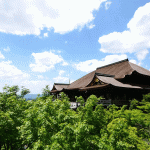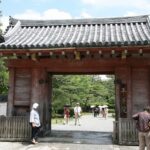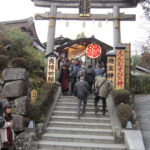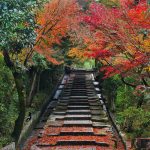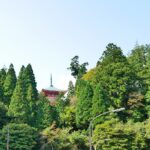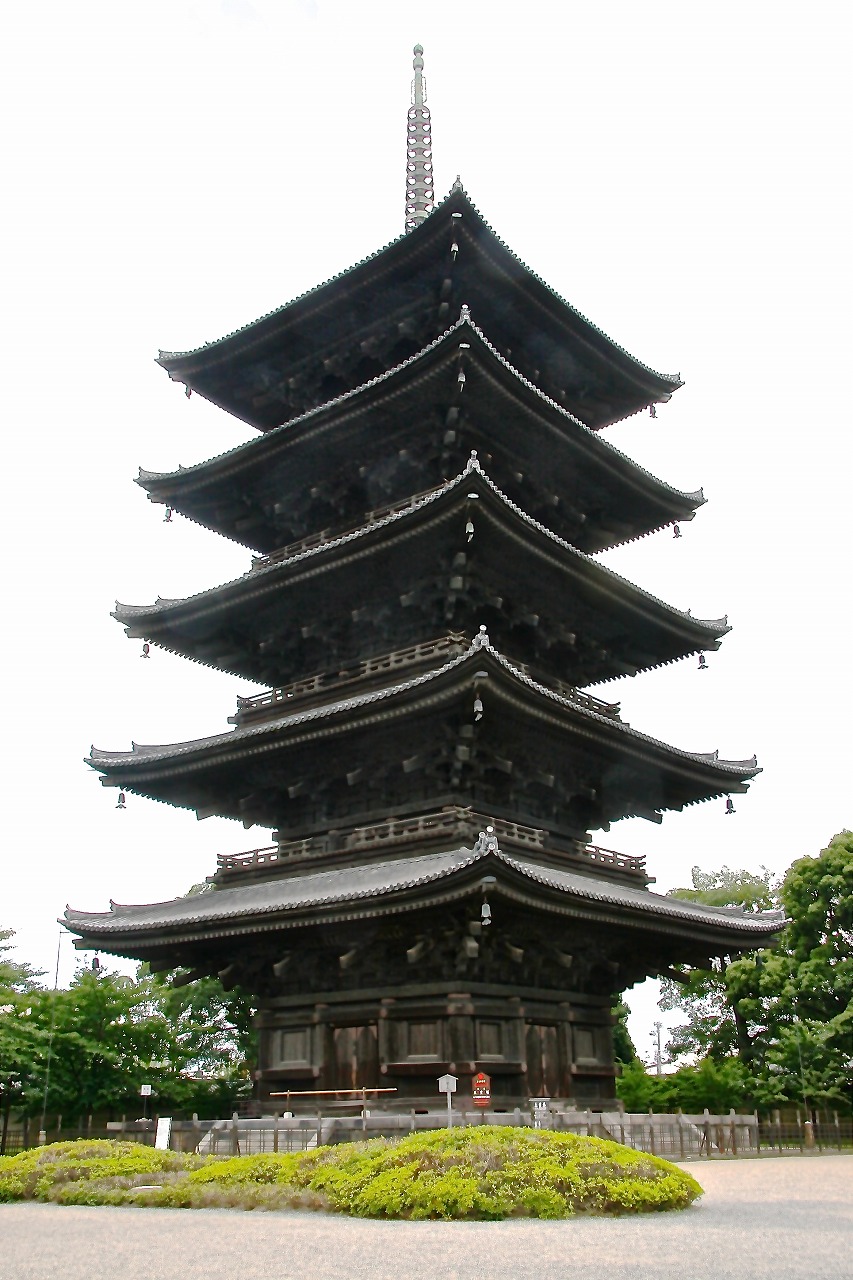
ページの目次
To-ji Temple(東寺)
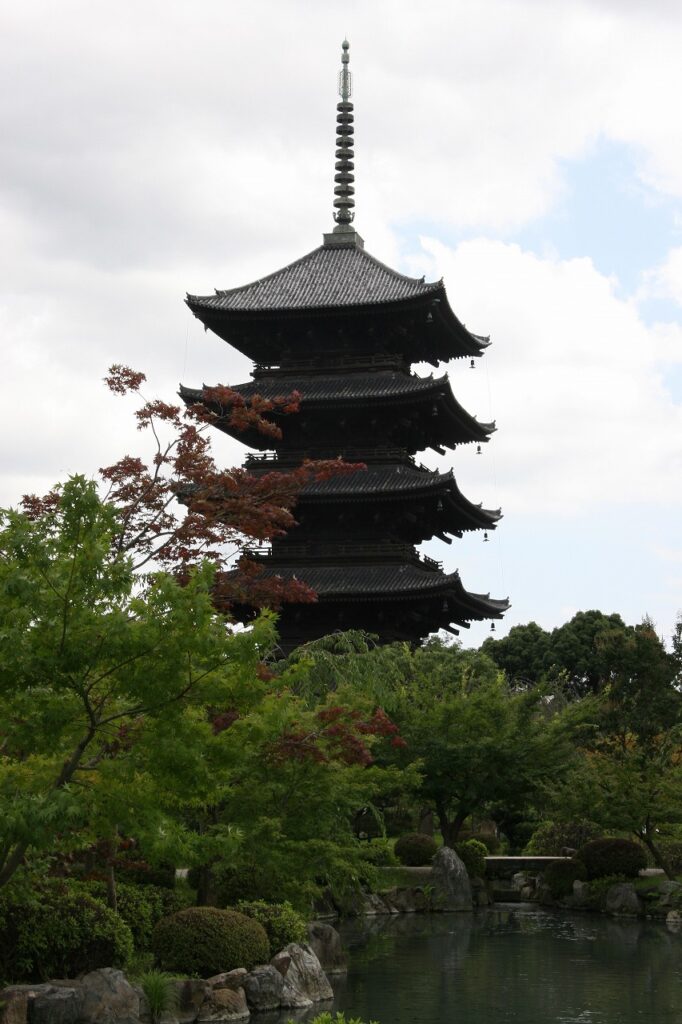
1. Location-Access
It is located in Rakunan Area near Kyoto station, Kyoto.
We can take 15 minutes walk from Machijouguchi to Toji temple or 5 minutes from Kyoto station to Toji bus stop by city bus #205.
(この寺は洛南地域で京都駅の近くに位置する。京都駅八条口が東寺まで徒歩で15分または、市バス#205で京都駅から東寺バス停まで5分かかる。)
2. Who was built this temple?
1) This temple is built in 796 by Emperor Kanmu for national protection of Heian period.
To-ji and Sai-ji temple were built in the east and west of Rajo-mon (Heian period Palace).
(この寺は796年桓武天皇は平安遷都の国家鎮護のために建立した。 羅城門の東西に
「東寺」と「西寺」が造営された。)
2) In 823,Kukai made this temple home of Shingon Sect. under Emperor Saga’s command,
two years later the Lecture Hall was completed.
(823年空海が嵯峨天皇の命により真言宗を開宗寺院とし、2年後講堂を建立した。)
3) This temple temporarily decided in late Heian Period (794-1185) and was widely believed by Royal Family to common people from Kamakura period(1185-1333), due to the growing faith of Koubou Daishi.
(平安後期に一時衰退するが、鎌倉時代から弘法大師信仰の高まりとともに、皇族から庶民まで広く信仰されるようになった。)
4) Later, it reconstructed with the support of Nobunaga and Hideyoshi, and protected by Edo Shogunated. The Main Hall was built under Imperial command by Hideyoshi.
(信長、秀吉の支援を受け復興し、江戸幕府にも保護された。
金堂(本堂)は秀吉の命の元で建立された。)
5) Formal name is Kyoougakoku-ji and was made a World Heritage Site in 1994.
(正式名称は「教王護国寺」といい、1994年に世界遺産に登録された。)
3. What is this temple famous for ?
1) Five-storied pagota(National Treasures) 五重塔(国宝)
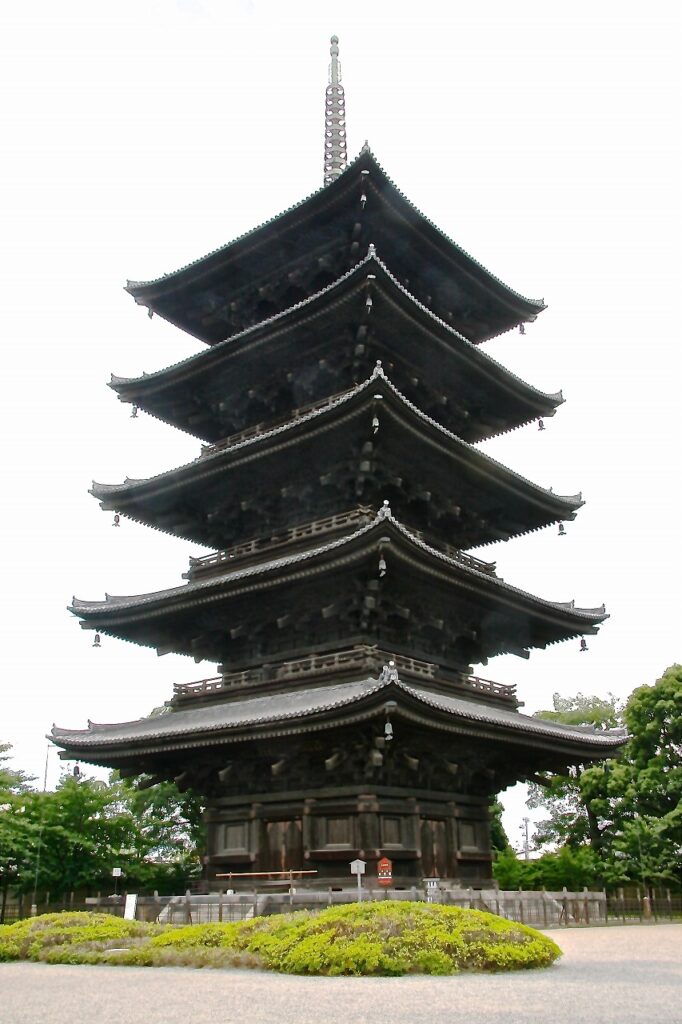
① Five-storied pagota built by Iemitsu TOKUGAWA in 1644 and the largest pagota in city is beautiful with 55m high.
The famous five-storied pagota includes Kofuku-ji, Daigo-ji and To-ji.
(1644年家光により建立され、京都市内で最大な塔、高さ55mであり非常に美しい。
有名な五重塔として、興福寺、醍醐寺、東寺がある。)
② This tower has been burned 4 times since foundation, there is no record that collapse by earthquake. It’s a structure where shafts and braid assemble repeat to the top layer. Flexible structure in which timbers are not fixed mail.
(この塔は創建以来、4度の焼失を経ているが、地震での倒壊記録はない。
軸部、組み物を組み上げ最上層まで繰り返す構造になっている。木材同士も釘打ち程度で緊結されていない柔構造である。)
③ Earthquake energy is absorbed at the junction. The energy get weaker as it reaches the upper layer. And the lower and upper layers vibrate alternately.
After all, this pagota is strong against earthquake because the resilience is stronger than fall force.
(地震のエネルギーは接合部で吸収される上層へ伝わるにつれて弱くなる。下と上の層が互い違いに振動する。結局、この塔は、倒れる力より復元力が大きいので、地震には強い。東京の高層ビルに利用されている。)
④ The walls and pillars of the first stor have a Ryokai Mandala of painting of 8 founders of Shingon drawn on them. The altar has statues of 4 Kongogai Buddhas and Eight Great Buddhism stautes around the central pillar.
(初層内部の壁や柱は、両界曼荼羅や真言八祖像を描いている。 また、須弥壇には心柱を中心にして金剛界四仏像と八大菩薩像を安置している。)
➄ Was made a World Heritage Site in 1994.
(1994年に世界遺産に登録された。)
2) Many National Treasures and Important Cultural Property 多くの国宝と重要文化財
① This is a big temple and Nandai-mon, Kondo Hall, Kodo Hall and Jikido are orderly placed in a straight line from south to north.
(ゆったりとした境内に南大門、金堂、講堂、食堂が南北に一直線に整然と並ぶ。
鏡容地を中心とした庭園の中を周囲を歩くことを前提にした庭である。)
② The layout and scale of temples have never changed and there are many treasures about esoteric art. It’s so precious to be imcomparable with other temples.
(創建以来一度もその位置が変わっていないことと、密教美術に関する多数宝物を
有する。他寺とは比較にならない貴重な存在である。)
4. What is highlight ?
1) Nandai-mon (Important Cultural property). 南大門「重要文化財)
Relocated from west gate of Sanjusangendo.
Wild sculpture is a characteristic of Momoyama culture.
Architecture that opens down like a frog in order to support the upper loading.
(1895年、三十三間堂の西門を移築されたもの。蛙股鳥獣彫刻は桃山文化の特徴で上部の加重を支えるために蛙の股のように下方に開いた建築である。)
2) Kondo (Main hall, National Treasures) 金堂(本堂、国宝)
Eight pillars gate with wide18m-hight13m. With its Irimoya style tile roof it appears to be 2 stories tall, but that is to be an extra of eavas. Yakushi Nyorai statue, Nikko and Gakko Bosstsu statue are shrined inside the vast space.
(幅18m@高さ13mの八脚門、外観は二重に見えるが一重裳階(もこし)付である。内部は広大な空間の中に薬師如来像、日光菩薩像、月光菩薩像が安置されている。)
3) Kodo (Important Cultural Property) 講堂(重要文化財)
A single-storey hip-and gable roof structure.
A esloteric statue is enshrined inside, focusing on Dainishi Buddha.
(単層入母屋造り。内部に大日如来を中心とした密教像が安置されている。)
4) Jikodo 食堂
Pilgrimage place for pilgrims
(巡礼者の祈り場)
5) Miedo (taisi-do, National Treasures) 御影堂(太師堂、国宝)
Miedo where Kukai lived, is a compound Buddhist temple from front hall, back hall and middle gate with whispering throughout. The Fudo-Myoo-sitting statue ,which Kukai considered a Buddist Buddha, (National treasure) is enshrined.
(空海の住居だった所で、前堂、後堂、中門の三部門からの複合仏堂で全体を桧葺き。
後堂には念持仏とされる不動明王座像(国宝)を安置されている。
6) Hozo 宝蔵
Hozo was lacated on the south side of the Keiga gate and a storehouse in the Azekura construction style of late Heian period(794-1185), it is To-ji’ oldest building.
(拝観入口の慶賀門の南側にあり、前堂、後堂、中門の三部門からの複合仏堂で全体に桧葺きである。後堂には空海の念持仏とされる不動明王座像(国宝)を)安置されている。)
